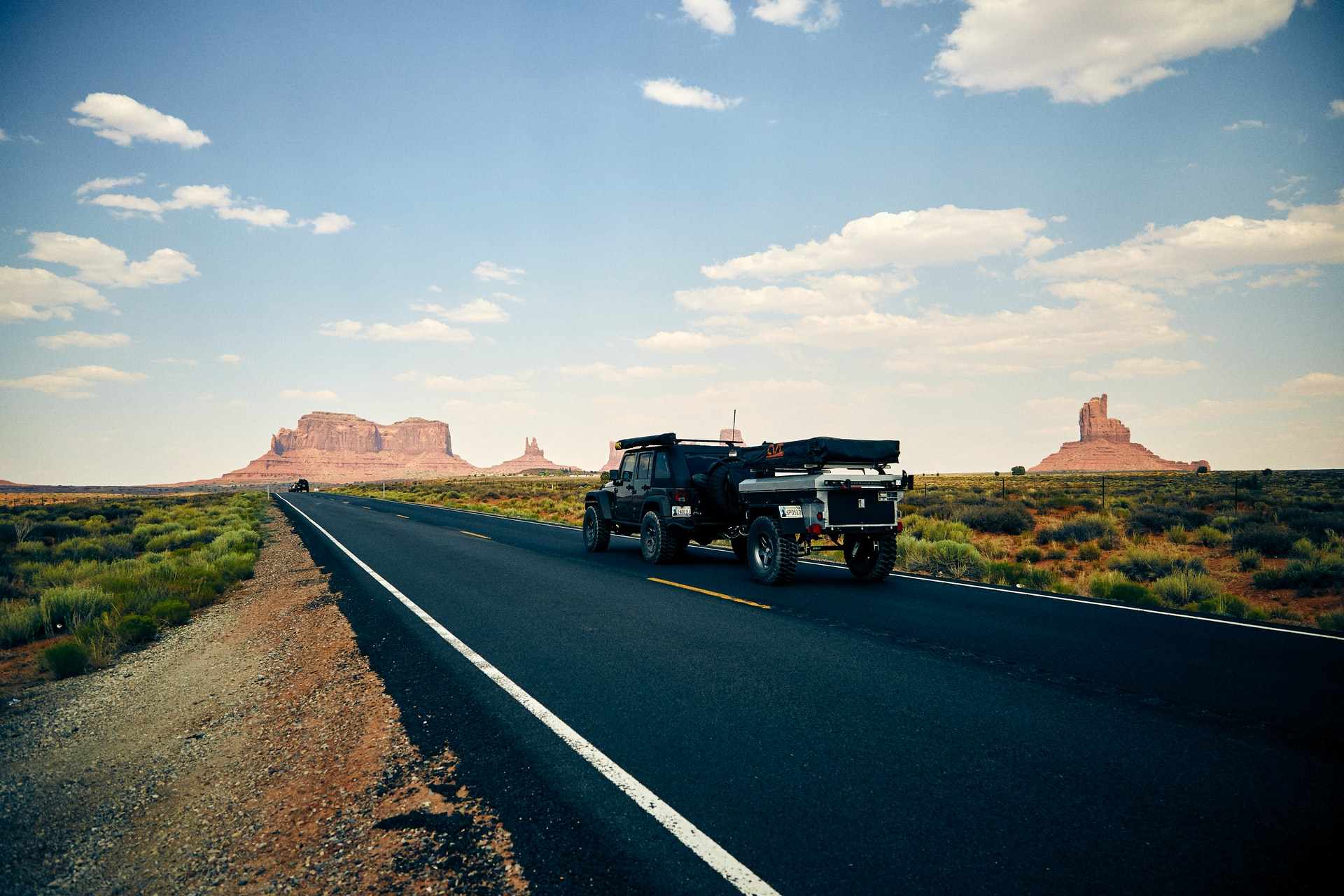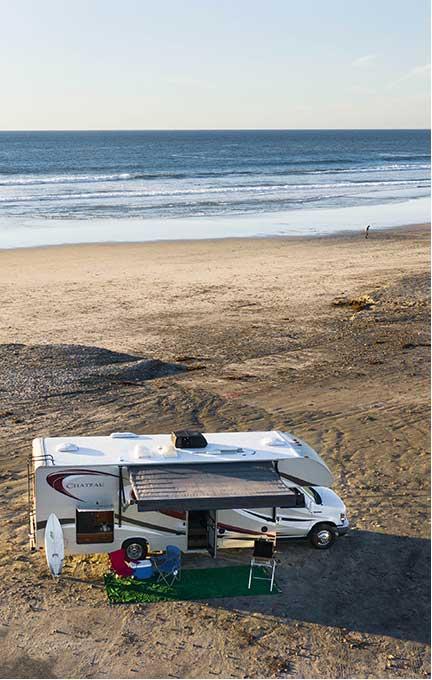Do you ever feel like there are eyes on you as you emerge from your tent or RV in the morning or when you’re relaxing by the campfire after dark? Maybe you’ve seen telltale signs, like footprints or trampled grass, that tells you nocturnal creatures have been checking out your digs while you sleep. It can be an eerie feeling to know there are loads of creatures sharing your campsite, and they’re better at tracking you than you are at tracking them.
Small changes in your outdoor habits and fine-tuning your observations skills are all it takes to read the story of the land around you and get to know the animals who live there. Here are some easy ways to find out who’s sharing your space on your next camping trip.
Minimize Your Impact
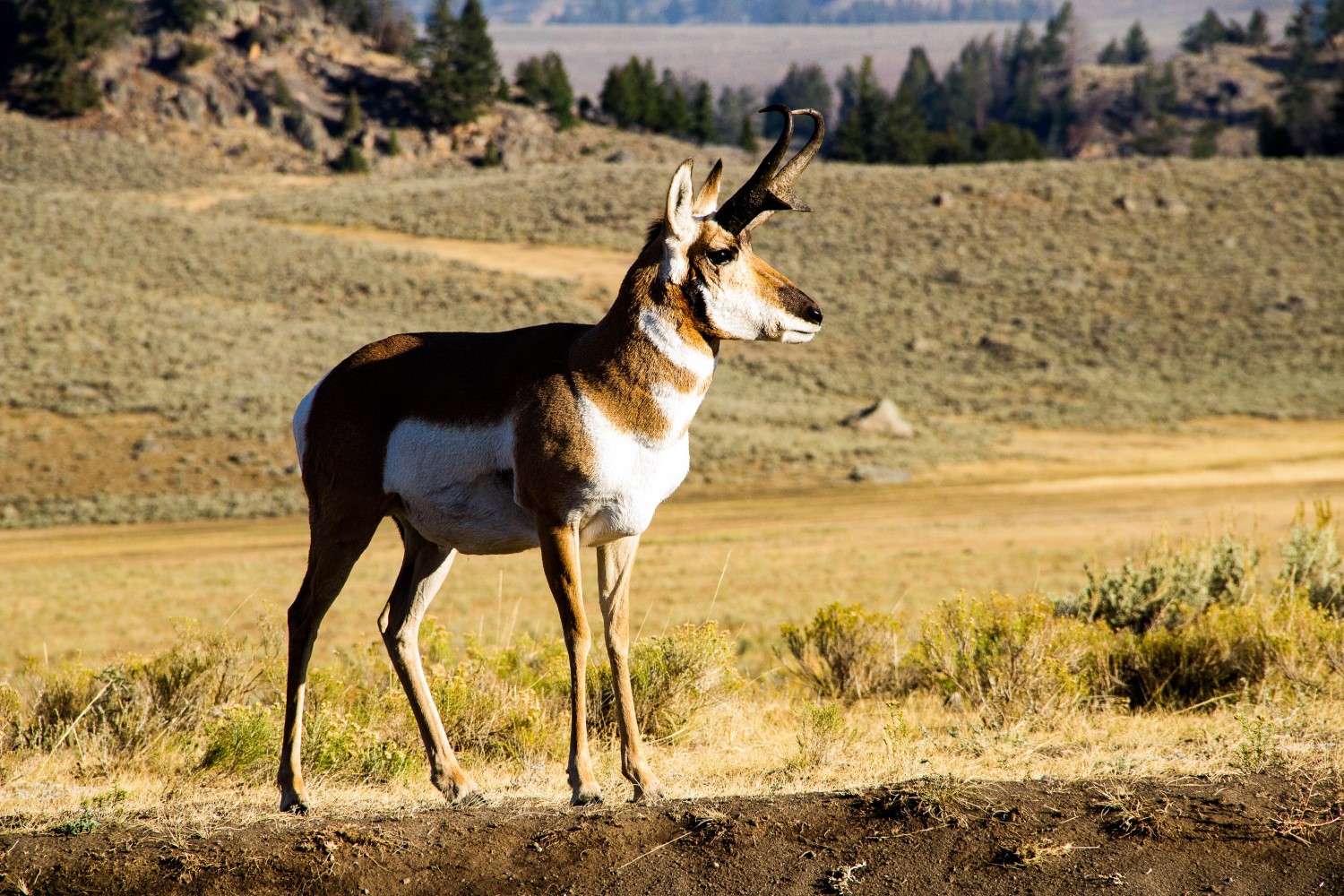
The first step toward getting in sync with the outdoors is making sure you don’t wipe out all the evidence while you’re setting up camp. Be aware that animal tracks and other wildlife clues are all around you. Start observing the minute you arrive, keep noise to a minimum, and take care to leave as much of the area untouched as possible. When you find clues, snap a few photos with your phone for later analysis.Take the same observant and thoughtful approach when you’re hiking, paddling, and exploring outside camp.
Know Your Tracks
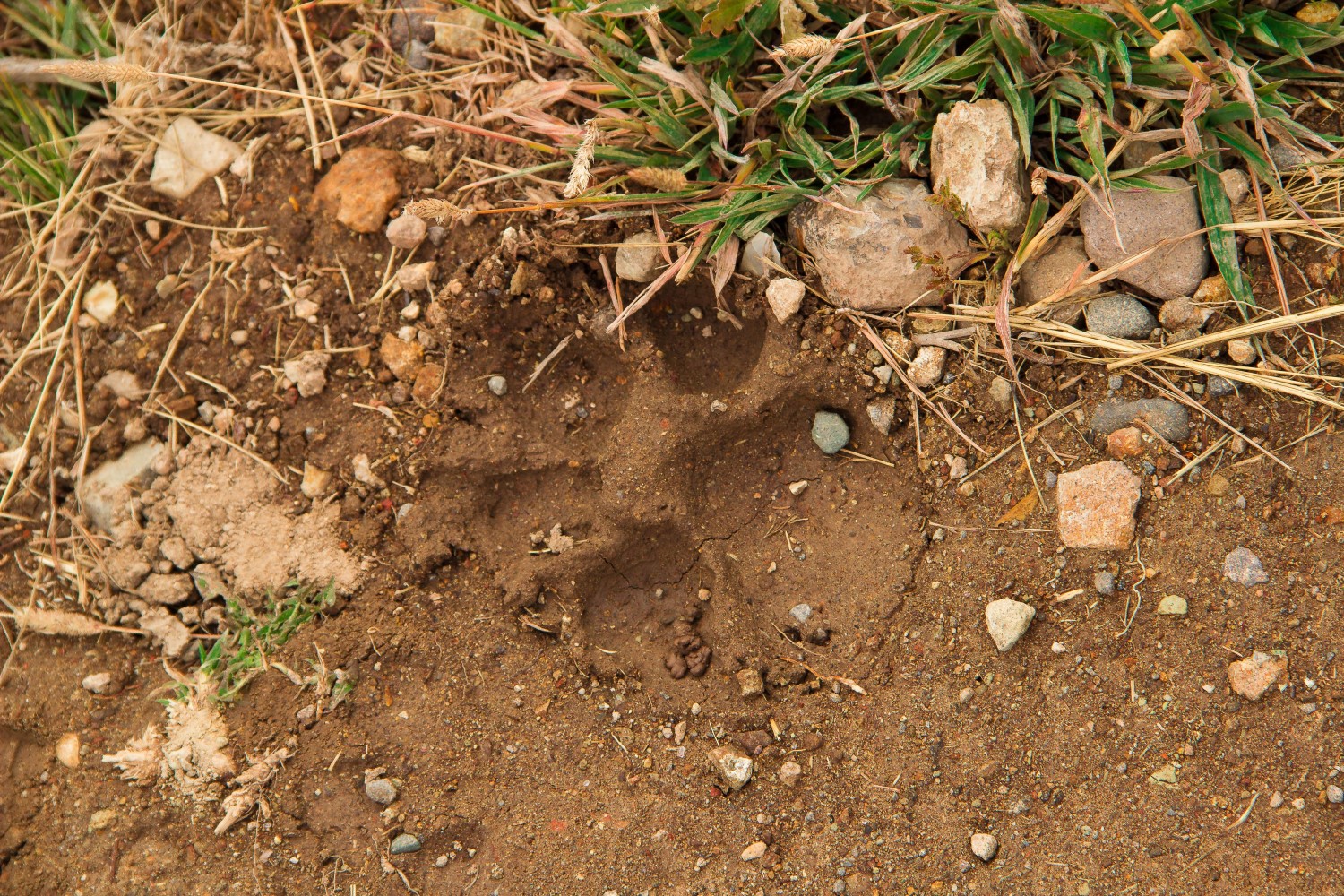
We humans like to hike on trails so we don’t have to bushwack through shrubs, trees, and dense undergrowth. It should come as no surprise that animals prefer trails for the same reasons. Therefore, your best bet for finding clearly defined prints is along the trails in and around camp.
Look for patches of mud, sand, piled loose dirt along the trail’s edge, and snow where print outlines are more clearly defined. Check berry patches and other food sources, along with lake and riverbanks where vegetation is trampled and thin, indicating the spot is a favorite local watering hole. Some of your best finds are likely to be around dawn as nocturnal critters turn trails into hunting and foraging superhighways at night. The low angle of the morning sun casts shadows that make track identification easier, and hikers aren’t out to stomp out the evidence yet, either.
Animal tracks break down into four broad categories: paw, hoof, bird, and reptile/amphibian. Paws indicate mammal activity. Felines like bobcats and mountain lions, and canines like wolves, coyotes, raccoons, and bears have four toes and claws, but cat prints don’t usually show claw marks. An opposable toe print means you’ve likely encountered a tree-climbing opossum, bear, or raccoon and webbing is a sign that an otter or beaver has passed by. Cloven hoofprints indicate deer, moose, or elk visited the area recently.
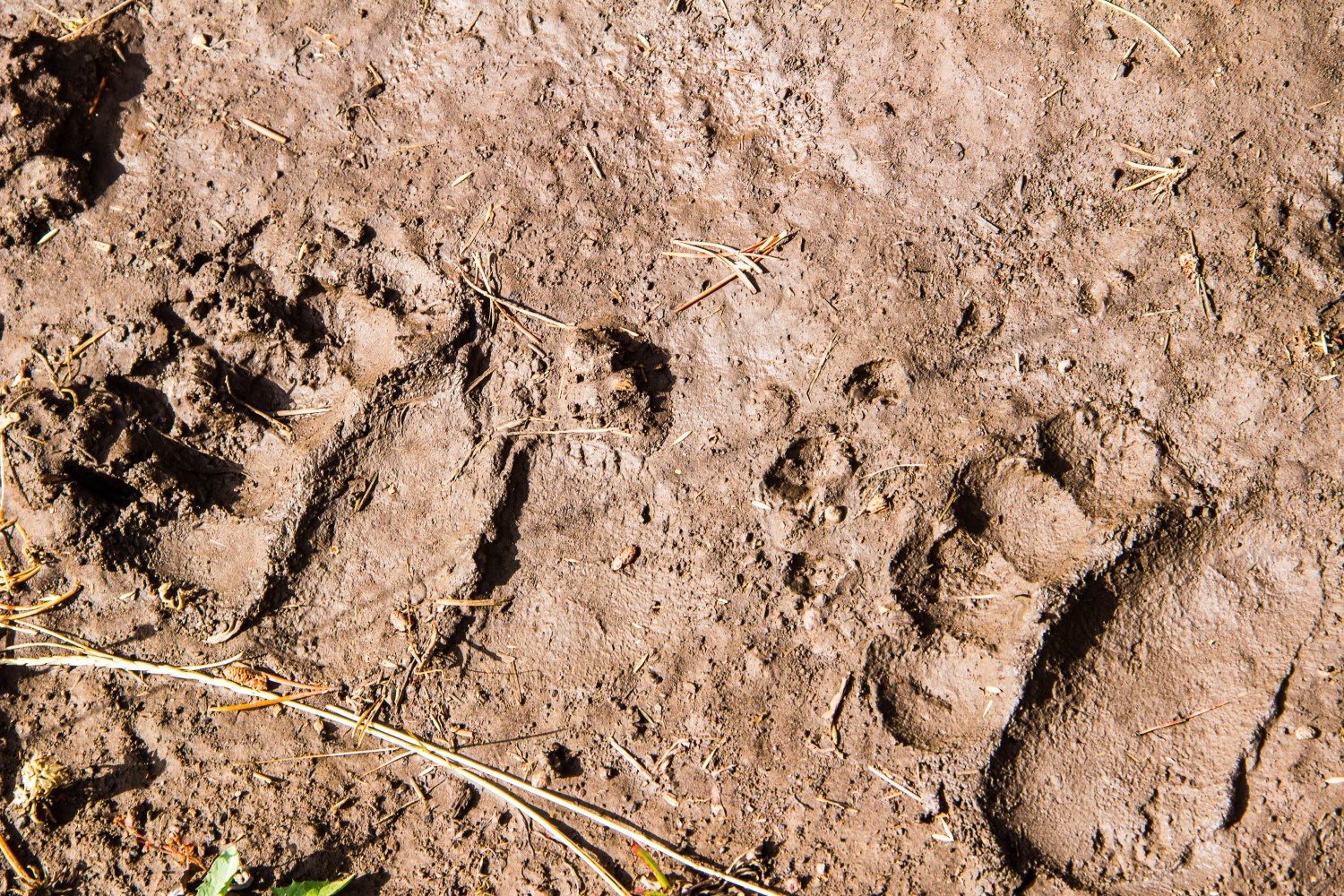
Bird tracks are the most common and most frequently overlooked tracks you’ll come across. Most have three forward-pointing toes, with one toe pointing backward. Variations to look for include webbing and the two-toed prints of owls and woodpeckers.
Assess width and length to determine if you’ve found grizzly or a marmot, fox or wolf, duck or pelican. Look at the surrounding habitat to the species behind the paw print, like food sources and potential nesting sites. Near water, you’re more likely to find smudge-like snake prints, turtle flipper treads, and thin, linear impressions from salamanders and lizards.
Scat Tells a Story
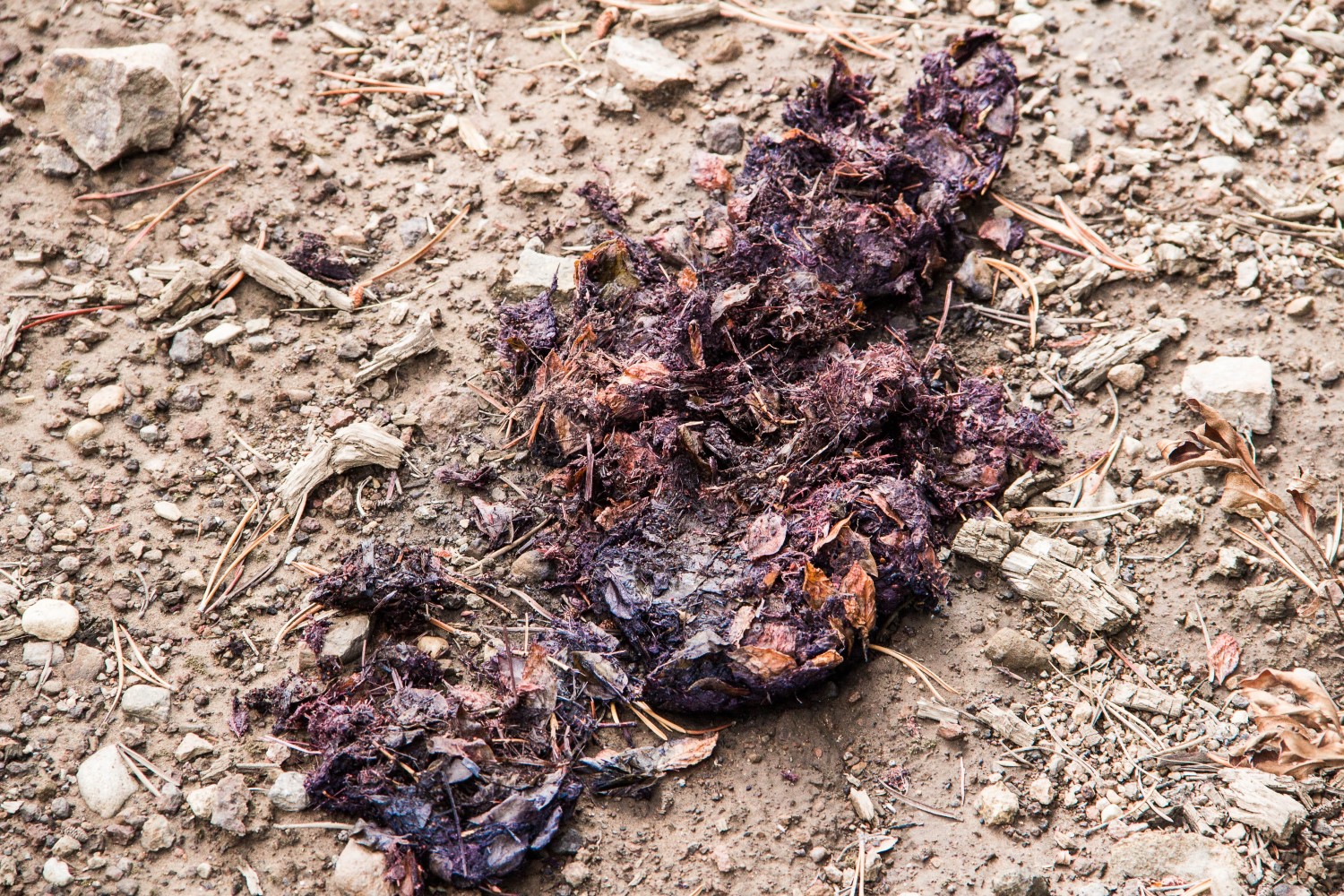
Animal droppings may not be very pleasant to look at, but they can tell you a lot about your surroundings if you know what to look for. You can not only find who your neighbors are, but you’ll be able to tell how recently they visited and what they ate last night for dinner. Pellets mean deer, elk, or rabbits are present. Large tubular mounds are left by canines, felines, and raccoons, and small mounds mean mice and voles are close by. Plops come from horses, cows, buffalo, and bears, while amphibians, birds, and reptiles leave white droppings.
Close examination tells you if you’re dealing with a carnivore, herbivore, or a bit of both. Black bear scat is typically loaded with berries, and dry grasses make up most elk and deer scat. Fur is a good indication you’ve found a cat, wolf, or grizzly. Be cautious if scat is not dry, or it’s still warm. This means the animal may still be close by.
Clues are Everywhere
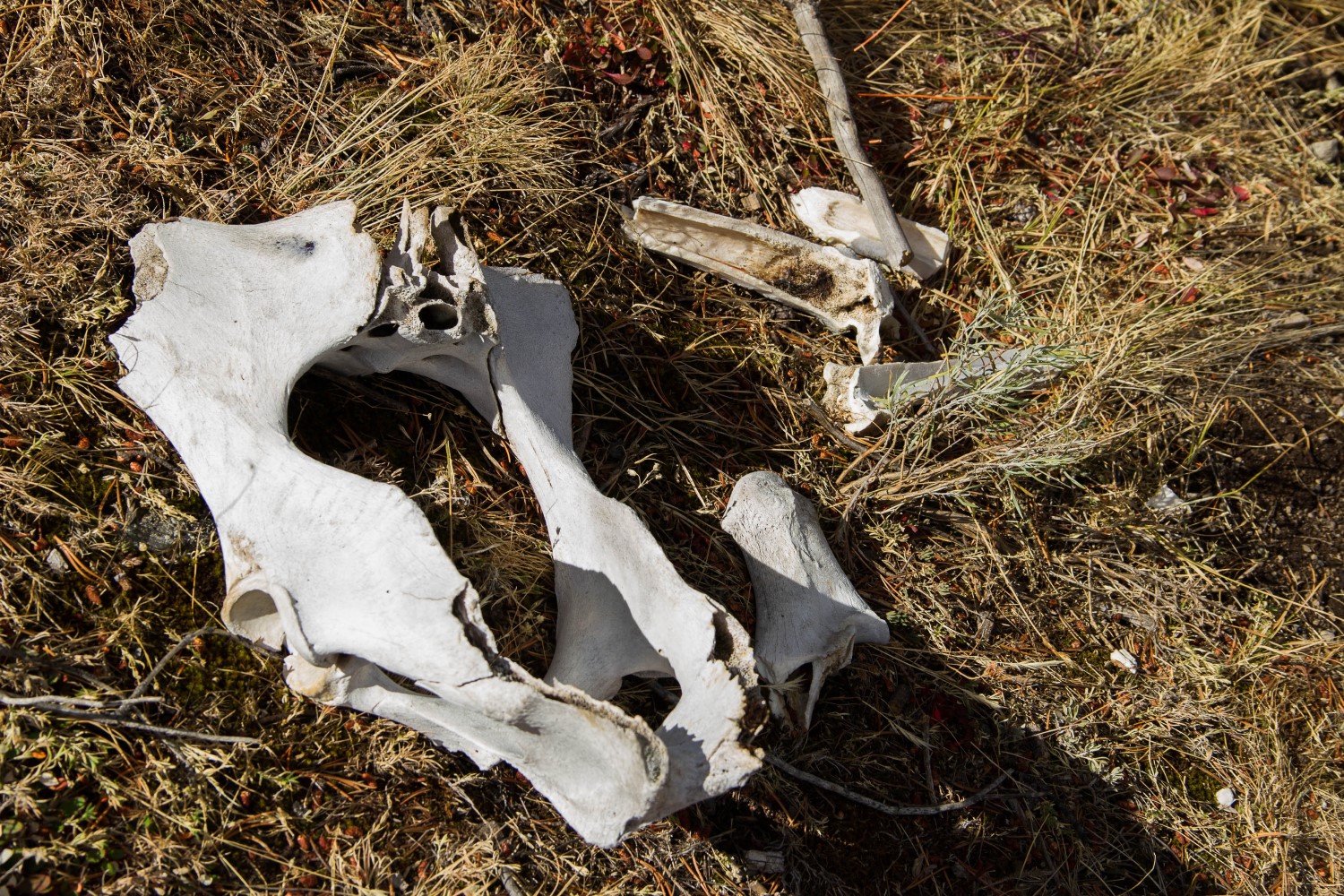
Once you tune in to your environment, you’ll find signs of life everywhere around you.
Claw marks on tree trunks or across the ground indicate an animal has been foraging for food. Trampled grass or brush indicates a bedding area, and hair or feathers are clear signs of wildlife nearby. Research creatures native to your destination before your trip, and take note of what they eat. Your campsite may feel a lot more crowded once you do.

